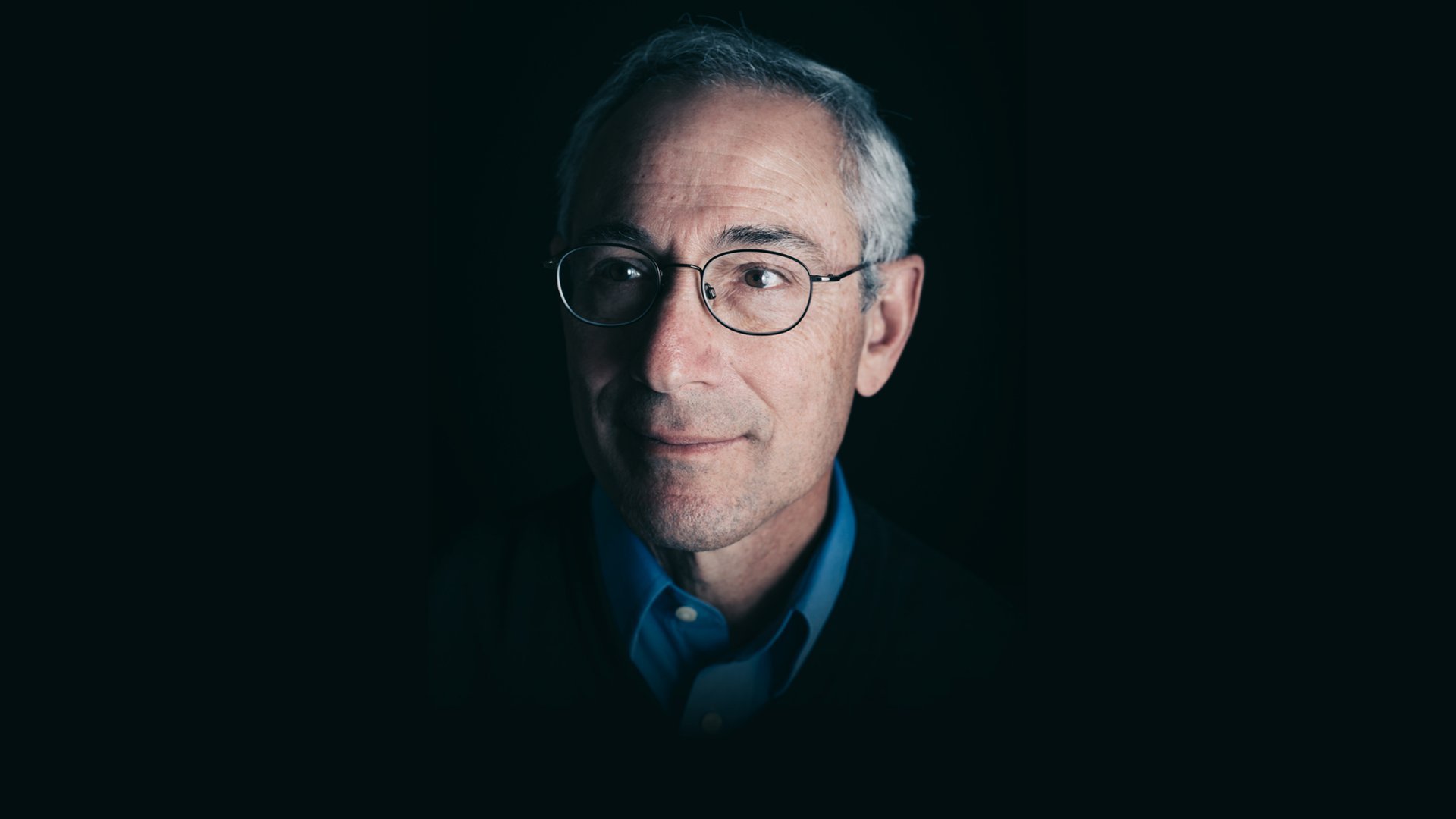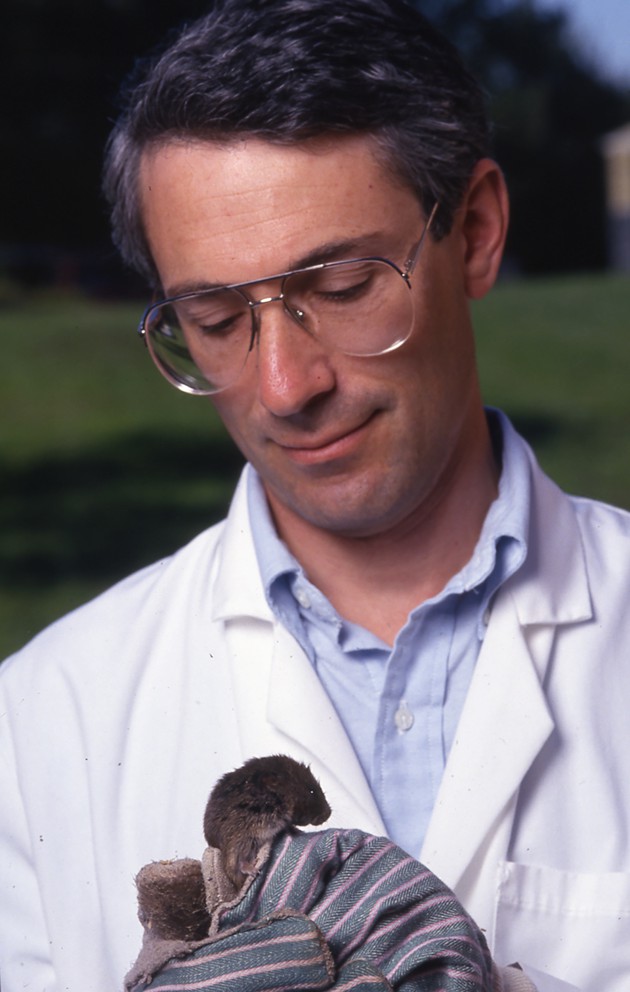
(6-30-17) I subscribe to The Atlantic and admire its often courageous and always thoughtful journalism. It recently published a profile of Tom Insel, former head of the National Institute of Mental Health, whom I first met in 2006 after my book was published when he asked me to speak at NIMH. A favorite at mental health conventions, Insel is one of the kindest and most thoughtful advocates whom I’ve had the pleasure of knowing. Here’s an excerpt.)
The Smartphone Psychiatrist
Frustrated by the failures in his field, Tom Insel, a former director of the National Institute of Mental Health, is now trying to reduce the world’s anguish through the devices in people’s pockets.
Published in the Atlantic. Written by:DAVID DOBBS
Sometime around 2010, about two-thirds of the way through his 13 years at the helm of the National Institute of Mental Health (NIMH)—the world’s largest mental-health research institution—Tom Insel started speaking with unusual frankness about how both psychiatry and his own institute were failing to help the mentally ill. Insel, runner-trim, quietly alert, and constitutionally diplomatic, did not rant about this. It’s not in him. You won’t hear him trash-talk colleagues or critics.
Yet within the bounds of his unbroken civility, Insel began voicing something between a regret and an indictment. In writings and public talks, he lamented the pharmaceutical industry’s failure to develop effective new drugs for depression, bipolar disorder, or schizophrenia; academic psychiatry’s overly cozy relationship with Big Pharma; and the paucity of treatments produced by the billions of dollars the NIMH had spent during his tenure. He blogged about the failure of psychiatry’s Diagnostic and Statistical Manual of Mental Disorders to provide a productive theoretical basis for research, then had the NIMH ditch the DSM altogether—a decision that roiled the psychiatric establishment. Perhaps most startling, he began opening public talks by showing charts that revealed psychiatry as an underachieving laggard: While medical advances in the previous half century had reduced mortality rates from childhood leukemia, heart disease, and aids by 50 percent or more, they had failed to reduce suicide or disability from depression or schizophrenia.
House is on fire!
Around this time, Insel told me recently, he’d just finished a talk describing the wonderful things the NIMH was discovering about the brain when a man in the audience said, “You don’t get it.”
“Excuse me?,” Insel said. “I don’t get what?”
“Our house is on fire,” the man said, “and you’re telling us about the chemistry of the paint. We need someone to focus on the fire.”
“I heard that,” Insel told me. “I went home and thought, There’s truth to that. It’s not just that we don’t know enough. The gap between what we know and what we do is unacceptable.”
For decades, most psychiatric research, and the NIMH’s in particular, had followed leads—clues about the brain’s hidden connections, the genome’s elusive secrets—that took decades to pay off. It was necessary work. But it had done far too little for those who were ill today.
Not long after that talk, at a conference in June 2015, Insel met Andy Conrad, who led Google’s new health spin-off, Verily. The two hit it off. That July, Insel visited Google’s Mountain View, California, headquarters. Conrad asked him: How would you like to run Verily’s new mental-health team? Instead of focusing on connections among neurons and genes, how about focusing on the connections between people that Google can track, analyze, and organize—the signals flashing across our world’s digital synapses—to better understand and treat mental illness?
Insel was in his mid-60s. Many people would have been thinking about retirement. But five months later, he had traded a kingdom of some 3,000 NIMH-funded researchers for a staff of one assistant, and he began working out of Google’s headquarters. He found in California’s digital culture a freedom he could previously only dream of.
Using Smartphones to capture mental health data
Things always seemed to come easy to Tom Insel. His father, H. Herbert Insel, an eye surgeon in Dayton, Ohio, told him and his three brothers that they could do anything they wanted to as long as they became doctors first. As the youngest, Insel says, “I learned early on that the path to success was finding something others weren’t into.” He found his first niche outdoors, collecting crawly things that he kept in the basement. He did so well in school that when he was 15, he left high school and—without a diploma—entered a six-year B.A./M.D. program at Boston University.
Then, at 17, he did something that announced a pattern: Moving smoothly along an enviable track, he jumped off of it. With his bachelor’s work done and med school waiting for him, he got a year’s leave from the university; married his college girlfriend, Deborah Silber; and took off. They spent the 1969–70 school year skirting the Vietnam War, alternating stints of service work (a Hong Kong tuberculosis clinic for boat people; a Mennonite hospital in India) with travel around Nepal, Cambodia, and Thailand. Then he returned to Massachusetts, finished medical school and a year-long internship, took another year off to travel and study philosophy, and spent another three years in a psychiatry residency at UC San Francisco. After that, he presented himself, at age 27, for employment at the massive National Institute of Mental Health campus in Bethesda, Maryland.
Working in bethesda as a research psychiatrist—increasingly studying patients, rather than treating them—Insel soon made a mark by running a drug trial that helped turn psychiatry away from talk therapy and toward chemistry. The trial showed that the antidepressant clomipramine helped people with obsessive-compulsive disorder faster and in more cases than psychoanalysis or standard talk therapy did. Today such a finding would go unnoticed. But this was the early 1980s, before Prozac and other selective serotonin reuptake inhibitors took over the world. At the time, OCD was seen as “the classic neurotic illness,” Insel recalls, Freudian anxiety run amok—“the prototype of what you got psychoanalysis for.” Yet Insel’s trial showed that a drug worked better and faster.
The papers Insel and others wrote about clomipramine over the next few years “really launched the field” of using antidepressants to treat OCD, he says, and helped pave the way for the Prozac era.
This irked some people.
Freud may have been going out of fashion, but he still dominated psychiatry. His followers did not like losing to molecules. Insel hadn’t meant to stoke controversy. He liked Freud. That the drug became part of this turf war surprised him.
But as he followed up with other papers on the neurobiology of OCD, he soon found himself a leader in anti-anxiety-drug research. At 30, just three years into the job, he had his own research unit. “I could have just done drug trials for the next 20 years,” he says, “become a full professor, spent my time giving lectures and doing drug-company gigs.” Instead, he jumped the track. He closed his lab in Bethesda to study neuroscience at Johns Hopkins for a year, then returned to the NIMH. But rather than going back to Bethesda, he went to the sticks to work with one of the oddest people in neuroscience.
Surrounded by farm country, the National Institutes of Health’s facility outside of Poolesville—a scattered collection of low-slung labs, barns, and bare-bones offices an hour from Bethesda—was lonesome in a way that’s hard to find in Maryland. Even today, one route between there and D.C. involves a cable-guided ferry that crosses at a languid pace. It was sleepy. “I needed that,” Insel says. “I needed a place where nobody was around.”
The man he joined there, a renowned neuroanatomist named Paul MacLean, was, Insel says, “from another era.” MacLean, who died in 2007, had studied English literature at Yale and chemistry and physics in Edinburgh, Scotland, before getting an M.D. back at Yale in 1940. He loved brains. His lab was stuffed with drawers holding hundreds of micro-thin cortical cross sections, and with shelves holding “jars of formaldehyde,” Insel says, “with—I’m not making this up—roadkill.” Whenever MacLean came across something dead on the road, he’d put the carcass in his trunk and drive it to the lab. The idea was that one of his technicians would saw open the animal’s skull, snip its brain free of its spinal cord, and slice, stain, and mount some brain cross sections onto slides. MacLean would then compare the brain’s structure with that of other roadkill. He didn’t much care what kind. “He just wanted to see how, say, the hippocampus of a deer differed from that of a possum.”
MacLean named his lab the Laboratory of Brain Evolution and Behavior. “No commas,” notes Insel. “Syntax entirely unclear, so you could read or say it any way you wanted.” Insel had “almost complete freedom,” of a sort you can’t really get now.
Insel’s landmark work was a run of vole studies that he started at Poolesville in the late 1980s.

The vole work made the careers of Insel, Wang, and Young. It also helped psychiatry with two perennial problems tormenting the discipline.
Psychiatry has always struggled to be taken seriously as a science.
By the 1980s, the field seemed especially lost. Its best drugs were from the 1950s and ’60s. Most of its hospitals, their failings made infamous by works such as Sylvia Plath’s The Bell Jar and Ken Kesey’s One Flew Over the Cuckoo’s Nest, had been closed. Talk therapy, which often works, but by psychobiological pathways painfully difficult to discern, was frequently lampooned.
For these and other reasons, including its penchant for savage infighting, psychiatry in the ’70s was “a collection of diverse cults rather than a medical science,” as Melvin Sabshin, a onetime medical director of the American Psychiatric Association, later put it.
But first he had to get fired.
“What’d you do?,” I asked Insel when he told me he got sacked.
“It wasn’t what I did,” he said, smiling. “It was what I didn’t do”—focus directly on humans.
When Insel started the vole work, in the late ’80s, the NIMH did not yet consider animal studies of basic behaviors likely to reveal much about human mental health. Insel’s decade of work on family and social bonds in animals had done little to change that. “You’re talking about why a mother rat takes care of its baby?” says his former colleague Larry Young. “It was too fluffy.” So in 1994, three years after Insel published his first vole paper, he got canned.
Getting fired, Insel says, “was actually the best thing that ever happened to me.” It got him to see the importance of telling a clear story with his research, which proved essential in making that research successful. And it let him take another job that ultimately paved the way for his return to the NIMH as director.
Just weeks before Insel got fired, the famed Yerkes National Primate Research Center at Emory University had offered him an interview for the job of director. Insel, studying voles in Poolesville, figured he had no real shot at it. But by the time of the interview, he was newly fired, highly prepared, and keenly focused. He got the gig.
In his 13 years as the director of the NIMH, from 2002 to 2015, Insel would become one of the best-known directors the institute ever had. His renown came partly from the length of his tenure, second only to the 15-year run (1949–64) of the founding director, Robert Felix.
When he became director, he took custody of a gluttonous giant that was being forced to diet. In the previous two decades, the institute’s budget had effectively tripled. But when Insel arrived, George W. Bush’s administration had just cut taxes and entered one war; it was preparing to enter another. Insel would work his entire tenure with an essentially flatlined budget—one in which, furthermore, 70 percent of each year’s expenditures was determined by prior commitments to ongoing programs.
(Sorry folks but if you want to read the rest of this article, click here or purchase the magazine.)
FROM OUR JULY/AUGUST 2017 ISSUE

Try 2 FREE issues of The Atlantic




